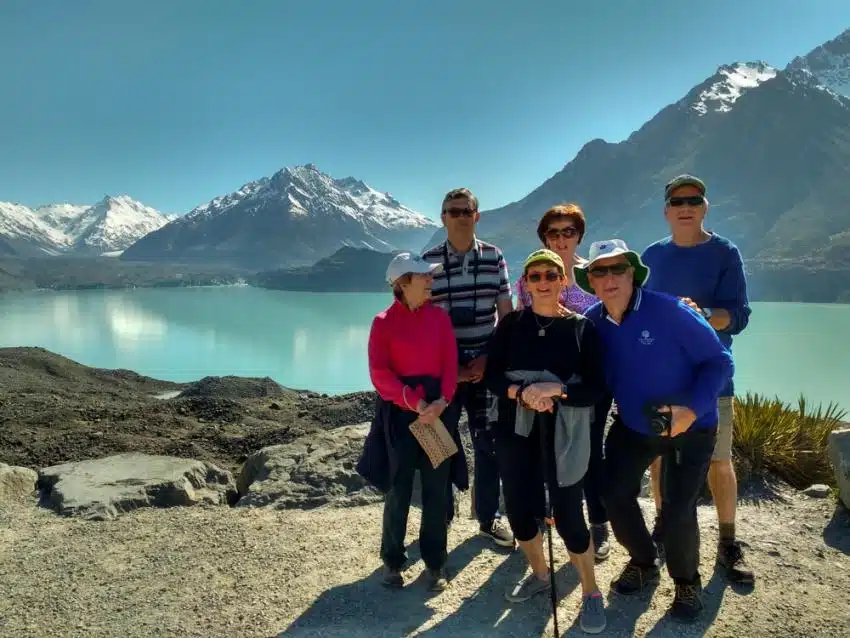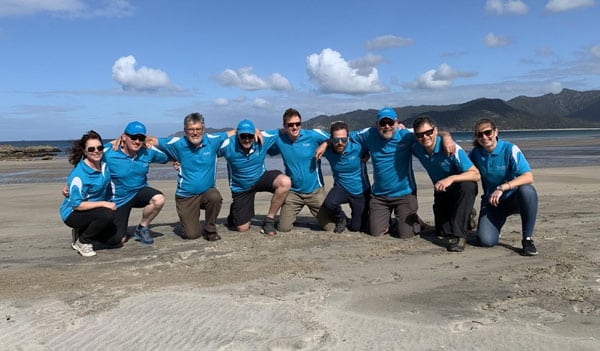What is the currency of New Zealand?
We’ve got our own currency down here in New Zealand, and it’s called the New Zealand dollar (NZ$). Notes are in denominations of $5, $10, $20, $50 and $100. In 2016, NZ introduced a new series of banknotes showing off famous Kiwis, NZ places, bright colours and native birds. We reckon they’re some of the most eye catching in the world.
The $5 Note was named ‘banknote of the year’ for 2015 (something we’re quietly stoked about)! Our $5 note has famous kiwi mountaineer, Sir Edmund Hillary, on the front of it. Sir Ed was the first person in the world to climb Mount Everest. It also shows off our highest mountain, Aoraki/Mount Cook, and the rare yellow-eyed penguin.
The $10 Note celebrates how NZ was the first country in the world to give women the vote by featuring Kate Sheppard on the front. Kate was one of the main people that pressed for woman’s suffrage in New Zealand. There’s also the white camellia and our rare Whio duck on the note, and it’s a bright, sky-blue colour.
The $20 Note has a cool alpine scene on one side, with a New Zealand falcon, rock daisy, flowering tussock and Mount Tapuaenuku. The other side marks NZ’s Commonwealth heritage, with an image of Queen Elizabeth II and the NZ Parliament Buildings.
The $50 Note is an eye-catching purple colour. One one side is Sir Apirana Ngata, who helped to revive Maori culture back in the early 1900’s. It’s also got our native Kokako bird on one side as well as an image of the Pureora Forest Park in the North Island.
The $100 Note celebrates Kiwi Sir Ernest Rutherford, who won the Nobel Prize in 1908 for splitting the atom. Over on the other size is our rare Mohua bird (yellowhead), which lives in the South Island. This note is a pinky-red (it’s also one of our favourites to have in the old wallet – funny that!)
Our coins are $1, $2, 50c (cents), 20c and 10c; they each have a unique color, pattern or size so it’s easy for you to tell the difference. Plus, how great is it that our lowest cent is 10c? No pockets weighed down with worthless 1 and 2 cent pieces!
Although, just to confuse you, prices might still include amounts below 10c. When you see this, e.g. $2.95, don’t worry, Kiwis use something called the Swedish Rounding System. This means everything from 1- 5 rounds to 0 and everything above will be 10. So that $2.95 will become $2.90 – easy!
Check out the currency converter at xe.com to see today’s exchange rate.
When you’re travelling overseas, figuring out unfamiliar currency to pay for things can be a bit of a pain. The cool thing about choosing to explore New Zealand on one of our tours is that most things are paid for in advance – meaning you won’t be digging into your wallet, trying to remember what colour our $20 is! And when you do need to pay for an ice cream or coffee on tour, you’ll have a friendly Kiwi guide on-hand to help out with our currency if you need it.
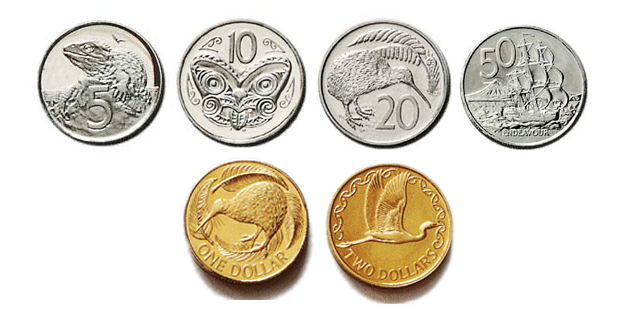
Which types of payment are accepted in New Zealand?
Cash and credit cards are the usual means of paying in New Zealand; we accept most major international credit cards but VISA and MasterCard are more commonly accepted, so are AMEX and Diner’s but you’d want a Visa or Mastercard with you too just to be safe.
You definitely should carry cash too; some businesses have a minimum-spending amount for credit card payments. Others like a camping ground or dairy (small convenience store) might not accept credit cards at all – and you’ve got to try at least one hokey pokey ice cream from the local dairy while you’re here!
You won’t be able to use US dollars in stores or restaurants, so be aware of that. It’s easy to change foreign cash to Kiwi currency in all the main cities and visitor spots, but you might be caught short if you’re off the beaten track so be prepared.
Plus, the rumors are true; we really are a friendly bunch down here in New Zealand. If you are unsure of anything, just ask someone.
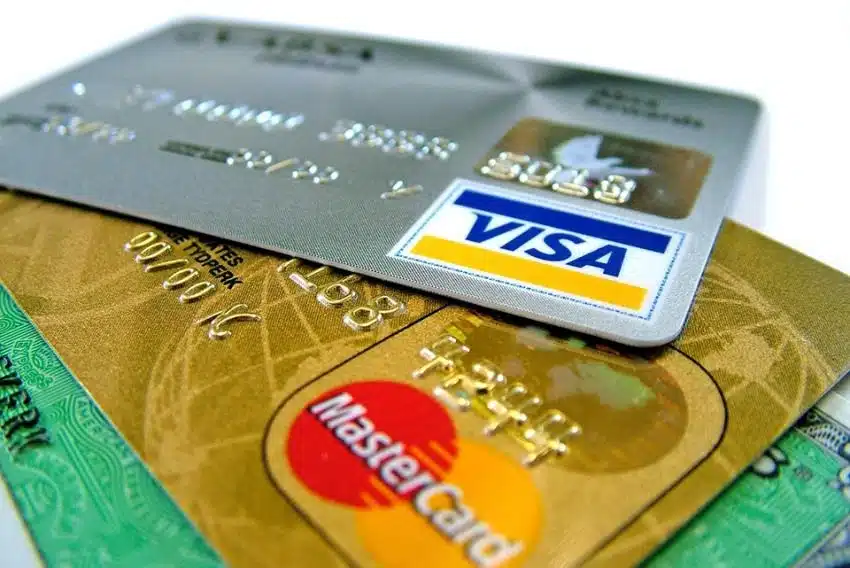
How to pay for things in New Zealand
Accommodation – You’ll usually book your accommodation online, in advance, with a credit card. If you decide to ‘wing it’ and try for a last minute deal, keep in mind some places require a credit card from you just in case of any mishaps. Trying to choose and pay for accommodation that ticks all the boxes is a bit of a mission when you’re travelling – keep in mind that if you’re on a tour, we’ve put in the leg work when it comes to choosing awesome accommodation (think views, location, comfort). Plus, it’s all pre-paid in your tour price. Bonus!
Food – At a café, you usually pay when you order and the waiter will bring you your classic kiwi bacon and egg breakfast and flat white coffee. In a restaurant, when you are ready to pay, you go up to the counter for the bill. This might be hard to get your head around, but if you wait for the bill to come to you, you might be waiting a while here in New Zealand!
Public transport – For the long haul journeys, paying online in advance with your credit card is easiest and cheapest. Plus, if you’re leaving from a back-and-beyond bus stop there might not be a service desk, so we recommend getting tickets before the day of your journey.
Unless you want an adventurous tale to tell your mates back home of how you made it to your city accommodation from small town New Zealand! If you’re travelling around a city, you can buy your bus ticket onboard with cash – this is perfect for getting rid of all your coins – or buy a bus card get heaps of journeys at cheaper price. In a few of our bigger cities we have trams and trains, where you can buy tickets from a machine at the station using cash or credit card, but in most places, to get around, we use the humble bus.
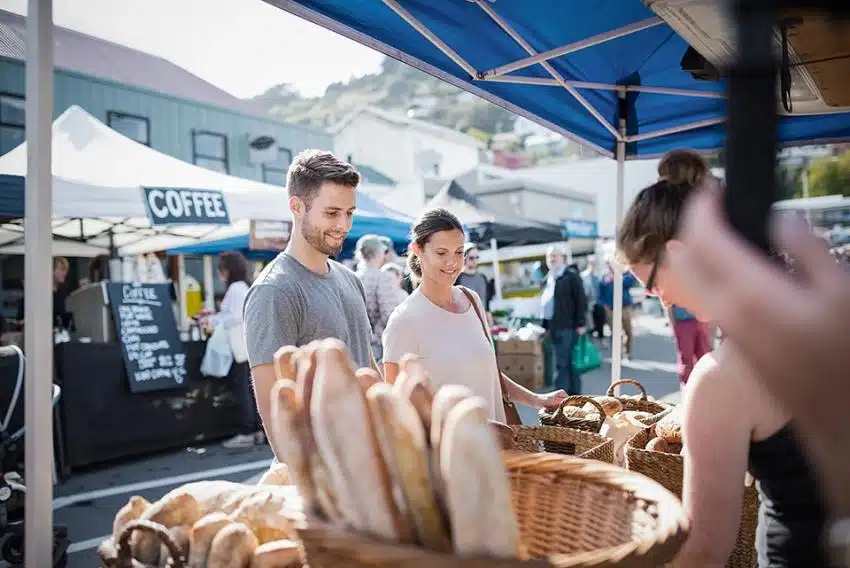
Tax and Tipping
We have something called a Goods and Services Tax (GST) of 15% in New Zealand, which is like sales tax in the US or VAT in the UK, but luckily here it’s already included in the retail price of everything. What you see is what you pay.
One little thing to be aware of is ‘service charges’ on public holidays, because labour laws here require businesses to pay staff a lot more to work on public holidays some restaurants will have a ‘public service surcharge’ of something like 15%.
Usually they have a sign outside or by the till, it’s always good to know about this before you get your bill! Tough one if you’re visiting from overseas as you don’t know the public holidays and you’re on vacation anyway, you don’t need to know! A lot of restaurants in places like Queenstown don’t charge it, but just keep your eyes open or ask.
Also, if you’re worried about how much to tip, know that tipping isn’t quite as common in New Zealand as it is in other countries. That said, it is common to tip your tour guide as a token of thanks, and if your waiter has given you top-notch Kiwi hospitality it’s not frowned upon to round up the bill or leave some coins on the table.
If you’re finding getting your head around our currency and the ‘Kiwi’ way of paying for things a bit tricky, don’t forget that when you’ve got a local Kiwi guide with you, you’ll find things heaps easier. Our guides are born and bred New Zealanders, and know heaps about where to find ATM machines or what a $10 note looks like!


